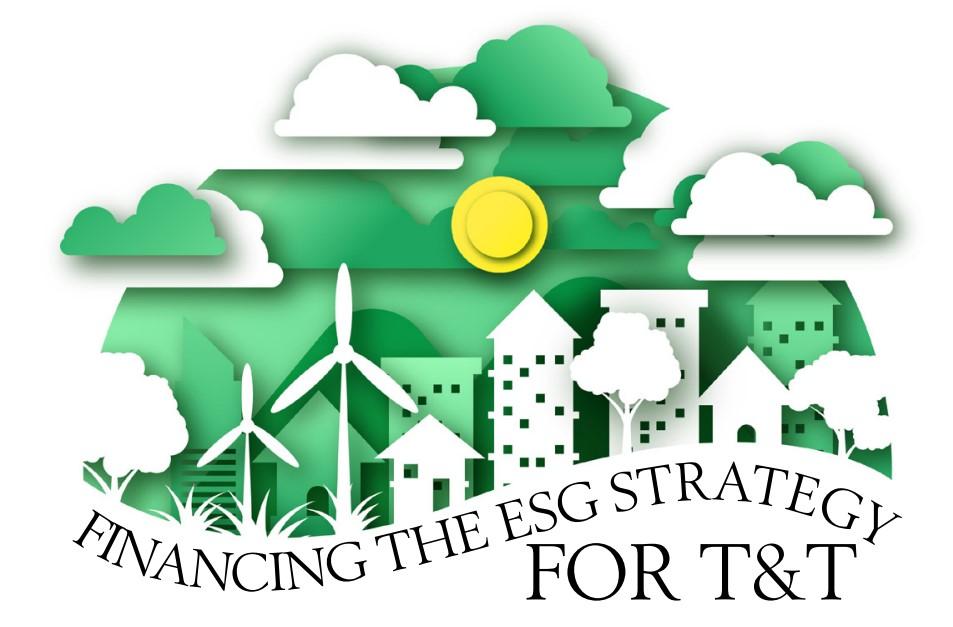Financing The ESG Strategy for T&T
By Indu Sharma
Chairperson of AMCHAM T&T’s ESG Committee and Director and Principal Consultant Q.E.D. Consulting Limited

LINKAGE Q1 (2023) - Woman's Leadership: Embrace Equity
The Government of Singapore, specifically its Ministry of Sustainability and the Environment, has taken the bold step to appoint a Government Chief Sustainability Officer responsible for driving its sustainability efforts.
In my view, this is icing on the cake. Singapore is demonstrating its commitment to driving its sustainability efforts. Moreover, it comes on the heels of many years of serious concerted efforts to move towards a sustainable future. Most recently, the establishment of the Singapore Green Plan 2030 outlined the country’s sustainable transition strategy. Under the plan, targets include:
· Quadrupling solar energy deployment by 2025
· Reducing waste to landfill by 30% by 2030 and
· Reducing water consumption, greening buildings, and requiring clean energy vehicles.
—in other words, a holistic, policy-based approach to meeting country commitments to Sustainable Development Goals and NDC goals.
No doubt under this model, there will be a significant collaboration between government and the private sector in Singapore in order to ensure that the resources are in place to execute this ambitious agenda.
At AMCAHM T&T, we are seeking to foster this type of collaboration to ensure that Environmental and Social Governance (ESG) frameworks present will be implemented, so that Trinidad and Tobago can achieve meaningful and sustainable growth in the short-term.
ESG provides a framework within which we can all take a hard look at our businesses and identify both risks and opportunities, solve big problems, create value and grow and transform the economies of small island states such as ours.
We believe that government can play an instrumental role from a policy perspective for Trinidad and Tobago to reach its carbon-reduction treaty commitments. At AMCHAM T&T, we are keen to play a collaborative role in developing practical policies that can get us there.
As the impacts of climate change are being felt, it is imperative to speak about the ability of small island states such as Trinidad and Tobago to adapt and build resilience in our communities, businesses and economies.
Flooding, sea level rise and reduction in biodiversity will have tangible impacts on our economies. For example, the valuation of our real estate portfolio may already be experiencing this impact. The ability to mitigate these risks is becoming increasingly more expensive and has already impacted the business to continue to be competitive.
It will take capital to enable adaptation and build resilience; therefore, the providers of capital have a pivotal role to play. They will undoubtedly assess business risk on the basis of ESG frameworks, so it is important for us as businesses to understand and not miss the opportunity to access much-needed capital.
The size of the prize is considerable—mind-boggling even—over US$50 trillion by 2025 (Bloomberg), representing more than one-third of projected total assets under management and accessible via defined ESG criteria.
Analysts expect accelerated growth as ESG extends across asset classes and themes, and while equities via capital markets will dominate new product development, credit represents 20% of new ESG funds.
Sustainable funding will be thematic in the areas of so-called “broad” ESG, Environmental, and Impact investing (Morningstar).
From a regional capital markets perspective, why shouldn’t Caribbean economies attract these sustainable funds? The real question is what it will take to make this happen.
1. Regional governments and agencies (SECs) should not seek to reinvent the wheel in terms of regulation.
2. There are already market-tested frameworks that sustainable funds understand well and feel comfortable with so alignment between our regional markets and established capital markets from a regulatory perspective will be key.
3. However, a major driver to attract the private enterprise to avail themselves of these opportunities will be government support and incentives to promote ESG projects, adaptation and resilience initiatives, and further listing on regional exchanges and wider overseas capital markets.
4. Governments need to ensure that any incentives should be technology neutral as many companies will run with several technology options before selecting the most economically and technically feasible solution.
5. Keep regulations simple and consistent and reliable. Don’t keep changing or introducing new regulations. To introduce more sustainable circular economy models industries such as energy and manufacturing need 5-7 years to deliver new outcomes.
Most of all, let us not discount our responsibility in the private sector. Businesses need to become familiar with and implement ESG frameworks to enable business agility and sustainability and to be ready to access the capital on the table.
The “how to” will be a challenge for many businesses. Nevertheless, AMCHAM T&T intends to support its membership and the wider business community to meet this challenge—we look forward to developing and sharing practical advice and tools that can help businesses of all sizes and models along the ESG journey.
ABOUT THE AUTHOR
Indu Sharma is the Chairperson of AMCHAM T&T’s ESG Committee and Director and Principal Consultant Q.E.D. Consulting Limited.